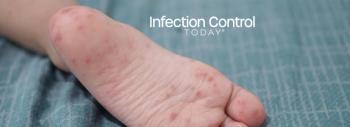
CDC's HICPAC Update: Impact on COVID-19, Pathogen Control, and Immunocompromised Safety in Health Care Settings
Recent CDC HICPAC revisions regarding SARS-CoV-2 control face criticism from the World Health Network and others due to alleged breaches in committee structure and erroneous infection control guidance, potentially impacting COVID-19 management and immunocompromised individuals in health care.
The CDC’s HICPAC (Healthcare Infection Control Practices Advisory Committee Committee) on November 3 and 4, 2023, advanced changes in their infection control guidance, which will impact the control of SARS-CoV-2, the virus that causes COVID-19, and other airborne pathogens.
A
“Immunocompromised populations appear to be at substantial risk of severe COVID-19 outcomes, leading to increased costs and HCRU. Effective prophylactic options are still needed for these high-risk populations as the COVID-19 landscape evolves.”3
The action letter was signed by 11 prominent patient advocacy and professional organizations and 21 patient advocates. This letter stresses that our health care system frequently encounters and treats airborne pathogens, including seasonal influenza, respiratory syncytial virus (RSV), and SARS-CoV-2.
Another group is concerned with
“Kevin Bell, a retired lawyer and member of the World Health Network, explained that the HICPAC committee violates its charter, which requires 14 members; it only has 9. Also, the
Bell expressed his concern about the need for more balance in the committee. He found it surprising that the committee no voting members who were an expert in aerosol science. He pointed out that the guidelines needed to give more importance to the aerosol transmission of COVID-19, the primary mode of virus transmission.
The complaint by the World Health Network challenges the legality of HICPAC's formal guidance on "Preventing Transmission of Infectious Agents in Healthcare Settings." It questions the legitimacy of this guidance due to a purported violation of the committee's charter membership requirements. Specifically, the World Health Network argues that HICPAC should include a substantial representation of experts in specialized fields like aerosol science, industrial hygiene, UV and HEPA filtration, ventilation engineering, respiratory protection, and occupational health and safety to comply with the Federal Advisory Committee Act. However, the complaint highlights the absence of such members within the Committee. This void in the representation of these critical fields is the core contention within the complaint, aiming to challenge the credibility and legal standing of the guidance provided by HICPAC.
The current CDC draft guidance4 appears to be conflicting and in places in error. For example, some provisions
In a statement to CNN and posted on
“A surgical or medical mask does not provide protection against inhalation of infectious aerosols,” Thomason wrote in a statement to CNN on HICPAC’s draft recommendations. “NNU urges CDC to fully recognize the science on aerosol transmission of infectious diseases and respiratory protection (including N95s, powered air-purifying respirators, and elastomeric respirators) in creating infection prevention guidance,” Thomason wrote.
Patients’ reactions were similar. During one of the
“HICPAC must recommend clear, robust, and authoritative precautions against the airborne transmission of pathogens. Anything less is malpractice and will do harm,” Almasy said.
Finally, another disputed CDC strategy involves
“CDC interim guidance recommends EBP as a strategy in nursing homes to interrupt the spread of “novel or targeted MDROs” (eg carbapenem-resistant organisms or C auris).”
There is also a lack of provisions for air quality standards, such as
The inertia and back peddling of standards is often justified by the imposed “burden” preventive strategies would place on facilities. However, the “burdensome” argument has had little, if any, supportive data regarding the actual impact on an institution. The Office of the Assistant Secretary for Planning and Evaluation, U.S. Department of Health and Human Services, considers an intervention cost-effective if the cost is less than
During the August 22, 2013, CDC HICPAC meeting, a commentator stated, “The only COVID-19 risks we are forced to take is when seeking out medical care.” As stated in an
References
- Letter to the Centers for Disease Control and Prevention. Oct. 24, 2023.
https://www.healthwatchusa.org/HICPAC-CDC/Downloads/20231024-CDC-HICPAC_ADA-Letter.pdf - Evans RA, Dube S, Lu Y, et al. Impact of COVID-19 on immunocompromised populations during the Omicron era: insights from the observational population-based INFORM study. The Lancet, Regional Health. Oct. 12, 2023.
https://www.thelancet.com/journals/lanepe/article/PIIS2666-7762(23)00166-7/fulltext
- Ketkar A, Willey V, Pollack M, et al. Assessing the risk and costs of COVID-19 in immunocompromised populations in a large United States commercial insurance health plan: the EPOCH-US Study. Curr Med Res Opin. 2023 Aug;39(8):1103-1118. doi: 10.1080/03007995.2023.2233819. Epub 2023 Jul 17. PMID: 37431293.
https://www.tandfonline.com/doi/full/10.1080/03007995.2023.2233819 - Lin M, Wright S (Co-Chairs). Isolation Precautions Guideline Workgroup. CDC HICPAC. CDC Slide SetJune 8, 2023
https://www.healthwatchusa.org/HWUSA-Presentations-Community/PDF-Downloads/20230608-CDC-IP_Workgroup_HICPAC-FINAL.pdf
- Consideration for Use of Enhanced Barrier Precautions in Skilled Nursing Facilities. CDC. June 2021.
https://www.cdc.gov/hicpac/pdf/EnhancedBarrierPrecautions-H.pdf .
- Frequently Asked Questions (FAQs) Definition and scope of Enhanced Barrier Precautions. CDC. July 22, 2023.
https://www.cdc.gov/hai/containment/faqs.html
- Roghmann MC, Johnson JK, Sorkin JD, Langenberg P, Lydecker A, Sorace B, Levy L, Mody L. Transmission of Methicillin-Resistant Staphylococcus aureus (MRSA) to Healthcare Worker Gowns and Gloves During Care of Nursing Home Residents. Infect Control Hosp Epidemiol. 2015 Sep;36(9):1050-7. doi: 10.1017/ice.2015.119. Epub 2015 May 26.
Transmission of MRSA to Healthcare Personnel Gowns and Gloves during Care of Nursing Home Residents - PMC (nih.gov) - Murphy H. Hospital at Center of Deadly Fungus Outbreak. The Messenger. Oct. 28, 2023.
https://www.msn.com/en-us/health/other/hospital-at-center-of-deadly-fungus-outbreak/ar-AA1iUuoR - Guidelines for Regulatory Impact Analysis.DHHS, ASPE. 2016.
https://aspe.hhs.gov/sites/default/files/migrated_legacy_files/171981/HHS_RIAGuidance.pdf - Americans with Disabilities Act (ADA) Title III Regulations. Nondiscrimination on the Basis of Disability by Public Accommodations and in Commercial Facilities. Department of Justice. Mar. 8, 2012.
https://www.ada.gov/law-and-regs/title-iii-regulations/
- ASHRAE Standard 241, Control of Infectious Aerosols.
https://www.ashrae.org/technical-resources/bookstore/ashrae-standard-241-control-of-infectious-aerosols
Newsletter
Stay prepared and protected with Infection Control Today's newsletter, delivering essential updates, best practices, and expert insights for infection preventionists.






